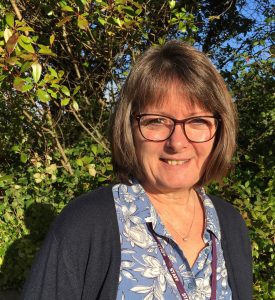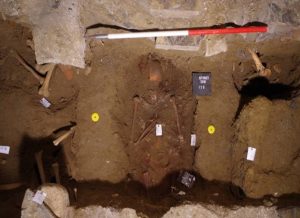The DAC – is it just an abbreviated bureaucratic hoop to jump through?

Sue Thorold, the lynch-pin of the DAC
Managing a diocese inevitably involves jargon and a bewildering array of abbreviations, DAC, BDC, OFS, CMS, TMS to name a few. All of which can be intimidating and excluding. And that’s a shame as the people behind the letters work hard to help, encourage and grow the Anglican Church across Cornwall.
Sue Thorold is one such person and she is key to the DAC, or Diocesan Advisory Committee. This represents a wide group of people who invest their time, predominantly voluntarily, and expertise to ensure that all open church buildings across Cornwall are protected, cared for and get a say in what happens to them. Many of these churches are centuries old, their walls steeped in prayer with their altars bearing witness to the happiest and saddest moments of people’s lives.
But times move on, the fabric of these precious buildings decay and change become necessary to reflect the different ways in which churches are used today. Churches are not subject to secular planning permission, but must legally comply to ‘faculty jurisdiction.’ A bit like ecclesiastical planning permission.
“I am there right at the beginning,” says Sue. “And I will last the course, working alongside churches to support them through what can be an overwhelming process. From the moment they begin to articulate their desire to make a change to when the application, or faculty, is submitted to the Chancellor, I’ll be there.”
From incinerator loos to shallow bones

The emerging bones at Sithney
Sue’s been in the post for seven years and there isn’t too much that she hasn’t seen. “Most often we get requests for loos or kitchens,” says Sue. “But the funniest was for an incinerator loo in a church porch that came with a supporting photo of a gentleman sitting on a loo, in the porch!”
Recently, Sue has been working with the parish team at St Sithney following the discovery of bones. Finding bones wasn’t necessarily unusual except for the fact that there were so many and so shallow, making them instantly discoverable as the floor started to sink beneath the congregation. Sue was involved in the process of obtaining permission to move the pews, dig up the floor, re-bury the bones and re-lay the floor.
“People used to think that the DAC always said no to everything,” says Sue. “But we’ve worked hard to change that perception. It isn’t just one person, the Chancellor, who has a say in whether things get approved. He has the last word but he will take advice from other bodies, like the Victorian Society or Historic England. We’ve come to know what will be acceptable and what might need re-thinking. So, rather than standing back and letting an application get to the decision stage knowing it will be rejected, we spend a lot of time working with people, including the various bodies, to try to come up with a solution that works for everyone.”
DAC supported by dedicated team of volunteers
Although Sue is the key person in the process, she is supported by an amazing team of volunteers including architects, liturgical advisors, historians, experts in Cornish history and churches, an archivist, advisors on art, sound systems, bells, clocks, engravings stained-glass and pretty much anything and everything relating to Cornish churches. All of whom go on site visits, invest in research, are available for discussion and advice and give their expert services for free. Not only that, the whole process of submitting a faculty is also free. The actual cost is around £300, to pay for the legal aspects of the process, but, unlike many other dioceses across the UK, the Diocese of Truro bears all the costs of every faculty, or application, made.
It might surprise you to know that currently, there are over 200 faculties in the system, of which 30 are currently live and in the process of being assessed. “It is a lot,” says Sue, “Cornwall is a busy county when it comes to making changes to their churches but we have an online system that has really helped to streamline the process.” Sue is on hand to help nominated individuals within the churches make a submission, gather the required information and upload everything. “It’s like a mirror, I can see what has been submitted, work with the church to make it more acceptable if necessary, and be there all the way through until the final button is pushed and the faculty submitted.”
“Cornwall is a busy county when it comes to making changes to their churches but we have an online system that has really helped to streamline the process.”
Access to a data base that stretches from the 1700s to the millennium
Sue loves her job as every day is different, from play-zones in Penzance to bones in Sithney, but says it has been made very much easier by the efforts of her predecessor, Canon Michael Warner. “He created a data base of every faculty since the 1700s to 2000, which is not only fascinating, but it makes my job easier. I can request to see the previous history of every enquiry, helping to understand the journey and the context.”
One sad fact that Sue shared is when a church is decommissioned and the altar and font removed, if it cannot be re-housed in an acceptable way, legally, it must be buried, destroyed and burnt. It’s a brutal image that thankfully hasn’t had to happen often in Cornwall, but there’s an incentive if one is needed to keep our churches open, alive and welcoming to all of God’s people across Cornwall.





